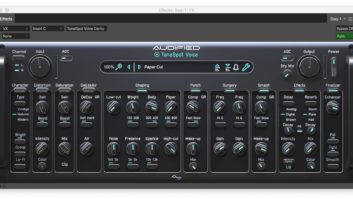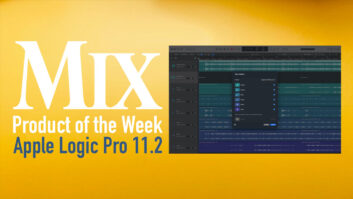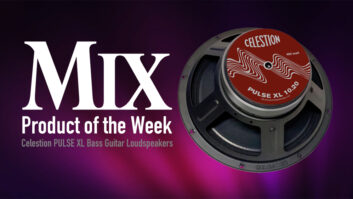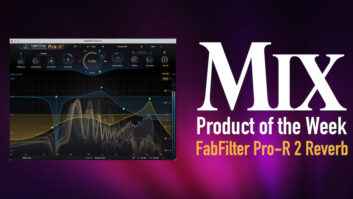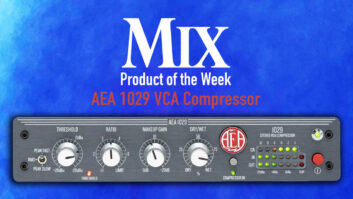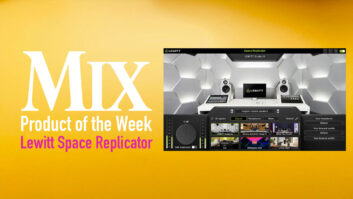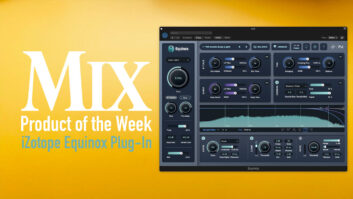The Czech Republic-based developer Audified has put out several mixing plug-ins in recent years that are dedicated to specific sources and feature a relatively small set of targeted controls.
TNT Vocal Executor focuses on vocal processing and is aimed at people without a lot of mixing chops who need to dial in quick vocal sounds. (I’ve known some singers who executed a vocal or two, but that’s a different subject.) DW Drum Enhancer is equipped with EQ, compression and other processing specific to drum mixing. It has more user control than TNT Vocal Executor, but still keeps a lot of parameters under the hood.
When I saw that the company had introduced a bass processor, I assumed it wouldn’t offer all that much user control, but after checking it out, it has a lot more than I expected. While it follows the pattern of its predecessors in terms of limiting parameter choices—such as only offering a couple of targeted frequencies for an EQ band—it has more variability than the others and makes it easy to quickly and significantly improve the sound of a recorded bass.
Read more Product of the Week: MOTU Digital Performer 10.
The bass signal passes through a chain of processing that starts with an Input gain control that can be switched into AGC (automatic gain control) mode. Next is the “Type” section, which lets you choose from three different tone choices: Vintage, Natural and Modern. Vintage brightens up the tone, Natural is flat, and Modern sounds like it’s boosting lows and highs.
Then you can pick one or more of three filters, Growl, Scoop and Lo-Fi, which impact the tone pretty heavily. I particularly like Scoop, which boosts in the lower midrange and adds a lot of fatness to my Fender Precision.
Next is Saturation, which includes Gain, Boost and Mix controls. Then you get the SBG module, which is a sub-bass generator that allows you to quickly dial in sub-frequencies to beef up the sound. You get two parameters: Intensity dials in the amount of generated bass, and Cut-Off sets a cutoff frequency for the top end of the generator.
Moving along, you come to the Shaping section, which is a broadband equalizer. It features several different bands that give you boost or cut in critical frequency areas for bass. Other than Low- and High-Cut filters, you get bands targeted at certain aspects of a bass’ sound, each with two frequency choices: Weight is 120Hz or 240Hz, Thump is 180Hz or 360Hz, Body is 500Hz or 700Hz, Cut Through is 1kHz or 1.5kHz, and Fret Noise 2.4kHz or 3.6kHz.
Punch is the name of one of two compressors in the plug-in. It features a slow attack and your choice of two release times, 50ms or 500ms. It gives you makeup gain and a Mix knob.
Next, you come to the Surgery section, designed for precise EQing. It has two bands, each of which lets you dial in a frequency (from 20Hz to 10kHz), choose from one of two high Q settings, and cut by as much as -50dB. You can also boost by as much as 20dB, but I’m guessing most people will use that for sweeping frequencies when deciding where to cut.
The second compressor, Smash, is next in the signal chain. It’s attack time is faster than the compressor in the Punch section (although the speed is not specified) and its designed more for dynamic leveling.
The next module lets you switch in up to three effects: Octaver, Auto-Wah and Modulation (Chorus, Flanger or Phaser), each with an Intensity knob and one or two other parameters.
Almost last is the Finalizer module. The Enhancer knob lets you boost low and high shelving filters set at 500Hz and 2kHz, respectively. Then you can choose three more tone-shaping buttons. Fat boosts a peak filter at 600Hz, Tight combines subtractive EQ and a multiband compressor, and Smooth turns on a 5-band EQ set at frequencies designed to smooth out the sound.
After that, your signal goes to the Output stage, which has a Gain knob and an AGC button if you want to let the plug-in set the optimal gain.
In summary, ToneSpot Bass Pro offers a wide selection of tools for shaping bass tone. Sure, you could open several different plug-ins (EQ, compressor, saturator, sub-bass generator, and a multi-effects processor) and dial in the same kind of processing with more control over individual parameters. But it would probably take you a lot longer to find the right frequencies and settings for all of those separate plug-ins. With ToneSpot Bass Pro, it’s all in one plug-in and all targeted at significant aspects of bass tone.
I admit to having been skeptical when I first read about this plug-in, but after trying it, on both my Precision and a recording of an upright bass, I am definitely impressed. It fulfilled its mission, which was to let me quickly dial in great sounding bass processing. For $99, it’s a bargain, IMHO.
